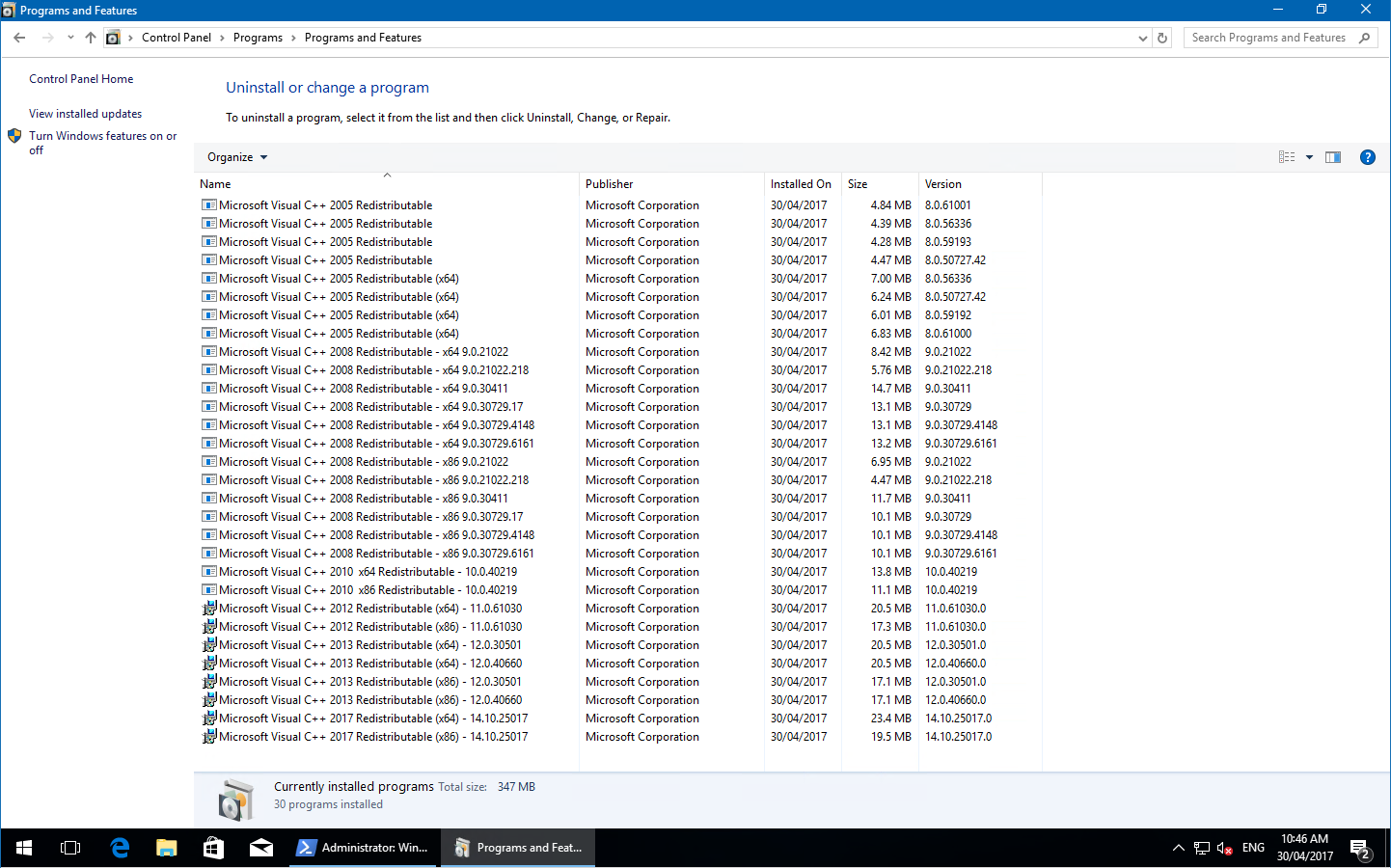

Some are installed along with Windows itself. On other systems, I’ve seen as many as twenty. As you can see in the picture above, I’ve already got four versions of the Visual C++ Redistributable on my system. I installed a fresh version of Windows 10 on a new PC a little less than two months ago. Redistributables also offer a single installation on a user’s computer that multiple programs can use at the same time. The packages are made available by Microsoft, who also tests and updates them with bug and security fixes. There are several advantages to using a redistributable. Most choose the latter, and that package is known as a Visual C++ Redistributable. They can bundle those DLLs into the installation of their application, or they can rely on a standard distributable package of shared code. When it comes time to deploy their software to users, developers have a choice to make. That shared code takes the form of dynamic link libraries (DLLs), a term most Windows users have come across at some point or other. The programming environment includes access to a lot of shared code libraries, which let developers use already-developed code for specific procedures instead of having to write their own from scratch. It offers developers a single application in which they can write, edit, test, and debug their code. It was originally a standalone product, but is now included as part of Microsoft Visual Studio.


Microsoft Visual C++ is a integrated development environment (IDE) used to create Windows applications in the C, C++, and C++/CLI programming languages.


 0 kommentar(er)
0 kommentar(er)
